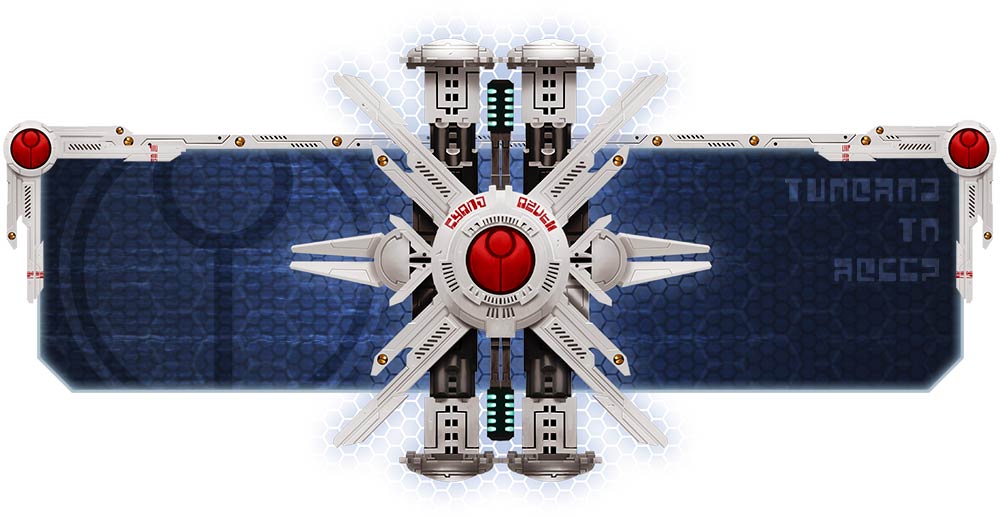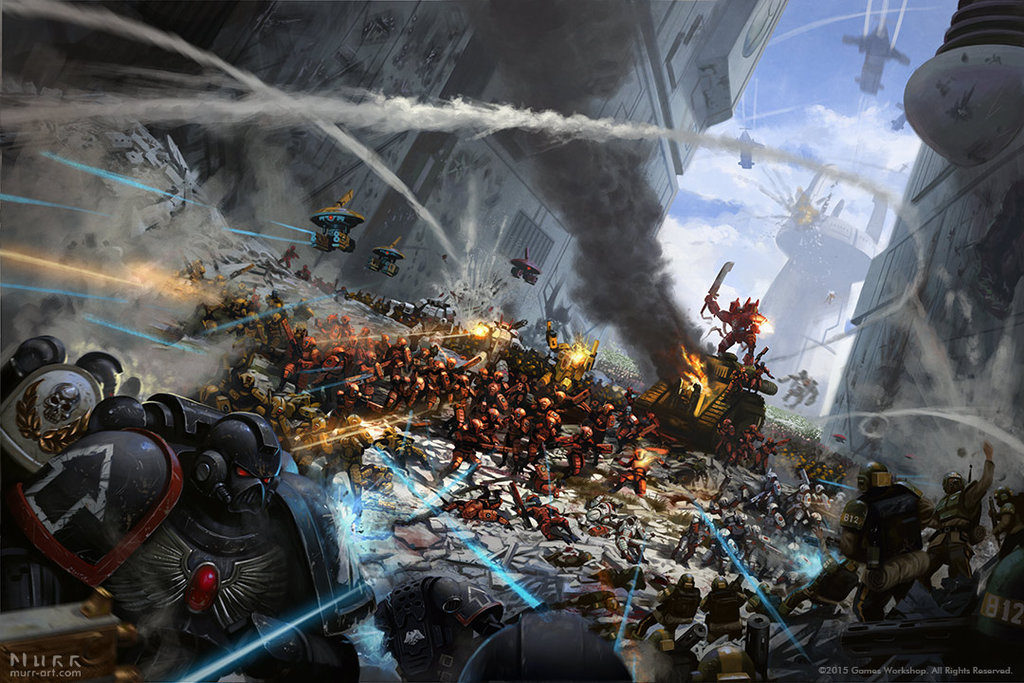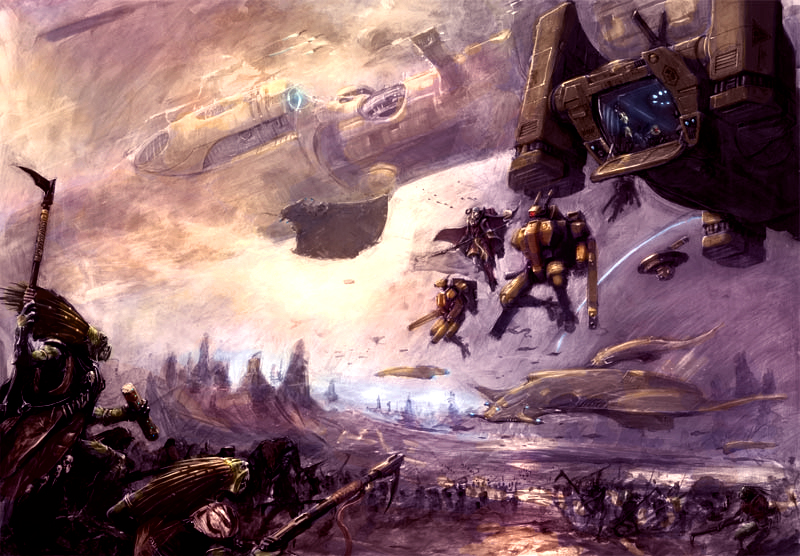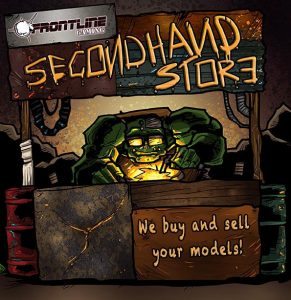Today we look at Tau’s secondary objective choices in matched play missions; click to read on, or check out the Tactics Corner for more reviews and strategies.
New Choices
The Tau codex, like all of the new books, comes with a set of unique secondaries that can be used in addition to the normal options from the Nachmund mission pack. If the current Tau codex has any weaknesses at all, it’s definitely in the scoring department- Tau have never been particularly good at playing the mission and that isn’t too terribly different this time around than previous ones. This carries over to their secondary objectives, which are… well, not awful but certainly not as impressive as Purifying Ritual or Herd the Prey are. So let’s take a look at the three new ones they get, and then compare them to the existing options.
Aerospace Targeting Relays (Shadow Operations) is a pretty common variety of your action-based secondaries. You place four markers at the four centers of the board edges, and while within 6″ of the markers your infantry units can perform an action to put up a relay. (You can try and put up several in a single turn, but only one per marker.) The action completes at the start of your next command phase and you score scaling points based on the total number of relays you put up- 2/6/9/15.
The fact that this maxes out at fifteen and also can have multiple markers put up in the same turn is very big- it compares favorably to Retrieve Nachmund Data and similar secondaries in terms of difficulty, but with a higher cap and faster scaling overall it ends up being a very attractive option when juxtaposed. Not finishing until the following turn is definitely a downside and can be a big problem against armies with a lot of firepower than can interrupt it, but as Tau are now they are usually going to be the one on the front foot putting pressure on the opponent, rather than the other way around, so this is perhaps not as much of an issue as it might be. It’s also very possible to dive onto it and place 2-3 relays on the final turn of the game after wiping out all of their relevant units. Stealth Suits are also a notable contributor here, since they are fairly resilient and have the ability to bounce to any board edge with the Wall of Mirrors strat.
Decisive Action (Battlefield Supremacy) is the second of the new ones for Tau. You get two variants here, depending on whether you selected Kauyon or Mont’ka; on the three turns of the game that your selected philosophy is active, you get 4pts for controlling half or more of the objectives on the field at the end of your turn. While this does mean you max out at twelve points total, this isn’t a horrible deal unless you are in a very high-scoring game and controlling half of the objectives on the table should be fairly achievable in most cases. In most ways this ends up being a slightly-differenter version of Stranglehold, which is already a pretty acceptable choice and having this as an alternative will certainly be to your advantage in a decent number of cases.
The fact that this keys off of your philosophy ends up being a pretty significant advantage, since unless you made a big mistake in selecting it your philosophy should key into your overall game plan- if you’re going Kauyon you are already hoping to play the long game, and if you are Mont’ka you want to try and take the advantage early. In this sense, it very much ends up being a “gain points for what you were probably going to do anyways” sort of secondary, which is exactly what you want.
The final choice is A Clean Victory, which is somewhat similar to the previous one in that it keys off your philosophy. In this case, during the “active” rounds for your philosophy you get 1pt for killing at least one unit and an additional 3pts for killing four or more units. This definitely has some potential, because it plays into what Tau are already best at- namely, killing stuff. As already mentioned, secondaries that reward you for doing what you were going to do anyways are always useful because they allow you to execute your game plan with fewer moving parts, since you don’t really need to worry about going out of your way for things; as with the other, it does cap out at 12pts, but that is a pretty acceptable score in most cases, so you’re not doing terrible there if you max it.
The bigger problem is that a lot of armies aren’t going to be easy to kill four units against, even for Tau. Custodes and Crusher Stampede, both very popular right now, are pretty low unit count armies and you aren’t easily going to off four of their units- and even getting just three is a major blow to your score, so you need to be very sure you can manage this. It’s even more punishing for the poor Kauyon players, bless their hearts, because it’s entirely plausible your opponent simply doesn’t have enough units on turns 4/5 to actually score this objective fully, which is some real poetic justice shit. So, while this is certainly a viable objective and one that you can take easily against some armies that feature strong MSU strategies, I don’t think it’s the slam-dunk that some people are going to regard it as.
Other Options
Of course, secondary objectives don’t just exist in a vacuum- any of them you are taking carry an opportunity cost of the other options in their category, and more broadly your other secondary choices in general. Decisive Action, as already mentioned, competes with Stranglehold in its category, but it also competes with Engage On All Fronts, which Tau are more than capable of scoring. With small drone units heavily devalued and the new requirements on Engage, however, I don’t think it’s a major contender and so Decisive probably gets the nod in most cases.
A Clean Victory has some more competition in its category, where To the Last is a very strong choice in many Tau armies due to the incredible resilience of Crisis and Broadside units. No Prisoners is also a powerful choice in the category against many armies, as is Grind Them Down in many cases, so the competition is pretty fierce there- even if ACV were a pretty good choice in its own right you might be hard-pressed to take it, but given the other failings I thin you will very rarely see it on the table.
Finally, Aerospace Targeting Relays competes with the many other action-based secondaries in its own category, but I think it broadly ends up being superior to them (contingent on factors such as the deployment map, etc.) Raise the Banners has been one that Tau can often take, but will probably fall somewhat out of favor at this point as better options exist. Investigate Signal is plausible when there is a good firing lane in the center of the table, and Retrieve Nachmund Data is never terrible so long as you plan around it at the army-building stage; however, as this necessitates taking some units you may not want to dedicate points to (e.g. Vespid) it can be a bit of a weak point, so it depends a lot on what sorts of things fit best into the army and what parts of the battlefield it is likely to be able to effectively control (and at what times.)
All in all, Tau end up with a reasonably-solid set of unique secondaries, but nothing exceptional in that respect- which, given the rest of the book, is more than fine. Just remember that you need to more than just shoot the enemy to death in order to win this edition (though not much more) and you’ll probably be fine overall. And as always, remember that you can get your wargaming supplies at great discounts every day from the Frontline Gaming store, whether you’re looking to start a new army or expand an existing one.




